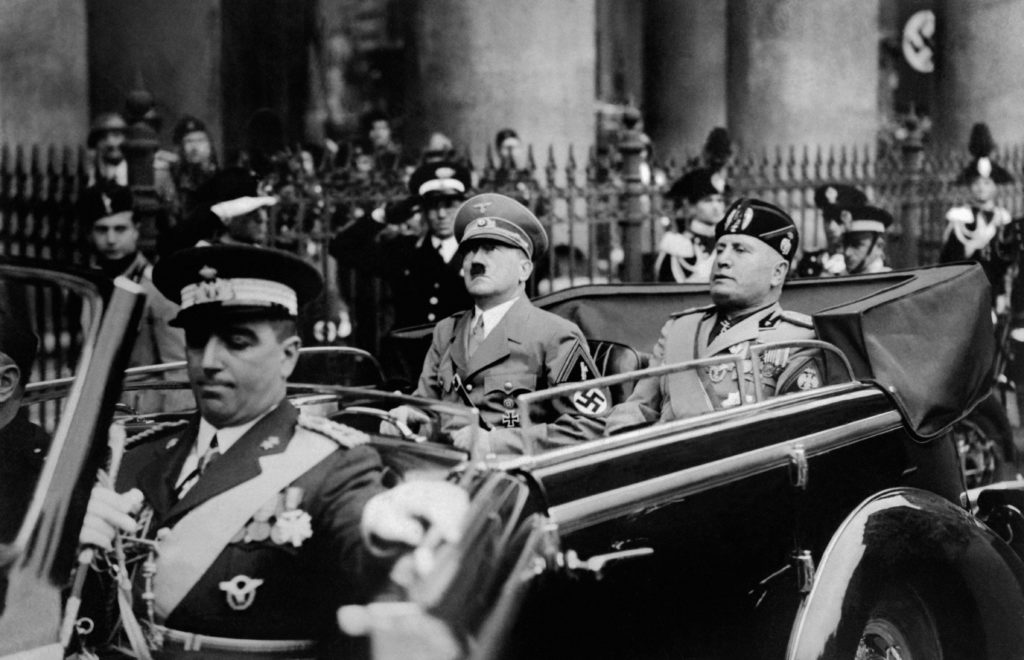DUBLIN City Councillors have backed a proposal to dedicate a plaque to the Irishwoman who shot the fascist leader Benito Mussolini.
A memorial for Violet Gibson, who was born in Dalkey, was proposed at a council Art’s committee meeting by Independent Councillor Mannix Flynn.
"It is now time to bring Violet Gibson into the public eyes and give her a rightful place in the history of Irish women and in the history of the Irish nation and its people," he stated in the motion reported by RTÉ.
On 7 April 1926, Gibson, from Merrion Square, Dublin, set out to assassinate the Italian demagogue known to his supporters as “Il Duce”, meaning “The Leader”.
As he walked among throngs of loyal devotees in the Piazza del Campidoglio in Rome – ironically after giving a speech on the marvels of modern medicine – the far-right leader came in close enough proximity for Gibson to seize her opportunity.
Mussolini is thought to have, rather inconveniently, moved his head at the moment Gibson pulled the trigger, meaning the bullet only grazed his nose.
She tried to take another shot, but the gun misfired.
In the furore that followed, the 50-year-old Anglo Irish woman was almost lynched on the spot by an angry mob, but the police intervened on time to take her into custody.
She was later handed over to British authorities at the request of Mussolini and was interned in a mental asylum for the rest of her life – despite repeated appeals for her release.
After passing the initial stages of approval, the motion will be sent onto the Commemorations and Naming Sub Committee which meets in March – the Chair of the Arts Committee, Social Democrats Councillor Cat O'Driscoll, has confirmed.
 A picture taken in September 1937, in Munich, shows German Chancellor Adolf Hitler (R) riding in a car with Italian dictator Benito Mussolini while the crowd gives the fascist salute. AFP PHOTO / FRANCE PRESSE VOIR (Photo credit should read /AFP via Getty Images)
A picture taken in September 1937, in Munich, shows German Chancellor Adolf Hitler (R) riding in a car with Italian dictator Benito Mussolini while the crowd gives the fascist salute. AFP PHOTO / FRANCE PRESSE VOIR (Photo credit should read /AFP via Getty Images)Who was Violet Gibson?
She was born into a privileged background that couldn’t have been further from the bleak surroundings of the Northampton mental asylum where she ended up.
Her father, 1st Baron Ashbourne, served as Lord High Chancellor of Ireland from 1885 to 1905 and was a friend of the British Prime Minister Benjamin Disraeli.
Gibson – whose upbringing was divided between Dublin and London – was a sickly child, who often suffered from scarlet fever, pleurisy, and bouts of so-called "hysteria".
At the age of 18, she served as a debutante at the court of Queen Victoria.
 Violet Gibson (wiki)
Violet Gibson (wiki)But Violet also had a “violent temper” and was committed to a mental asylum following a nervous breakdown – and being declared insane – in 1922.
Several years later, she relocated to live in a convent in Rome along with a nurse named Mary McGrath.
While in Italy, her mental state unravelled further, as she became engrossed in esoteric religious and philosophical currents, including mortification and theosophy, and was convinced that God wanted her to commit a sacrificial murder.
Gibson fired a pistol into her chest in February 1925 and rather astonishingly, she survived.
Following the death of her mother in March 1926, Gibson’s obsession with killing someone in the name of God now found a new locus: Benito Mussolini.
On April 7, Gibson left her convent armed with a revolver and a rock – the latter for smashing the window of Il Duce’s car.
As it happened the rock was unnecessary because Mussolini decided to walk among the crowd a mere few feet away from his would-be assassin.
After grazing his nose with the initial shot and then misfiring, she was seized upon by the crowd, arrested, and later deported back to Britain. The British expressed their gratitude to Mussolini, who decided not to press charges.
The Italian leader went on to finish his speaking tour with a bandaged nose, reassuring his supporters by saying, “This is a mere trifle."
Violet – who remained interned even after the war – died in 1956 and was buried in England.
Had she succeeded in hitting her target, Mussolini would have been tossed onto the scrapheap of history, and may not have emboldened other fascist leaders, such as Adolf Hitler, who, inspired by the Italian pioneer of fascism, came to power in Germany a decade later.

